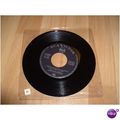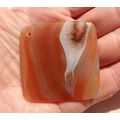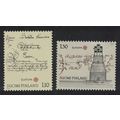Ship - White Star Liner Titanic nearing completion, Belfast 1912- repro postcard
- Condition : Used
- Dispatch : 2 Days
- Brand : None
- ID# : 122804025
- Quantity : 1 item
- Views : 2367
- Location : United Kingdom

- Seller : justthebook (+1695)
- Barcode : None
- Start : Wed 04 Dec 2013 11:05:35 (BST)
- Close : Run Until Sold
- Remain : Run Until Sold
More Listings from This Seller view all
Seller's Description
- Postcard
- Picture / Image: The Titanic at Belfast - 'The New White Star Line 'Titanic' (145,000 tons) nearing completion: docked in the largest graving dock in the world, Belfast , February 1912
- Publisher: Mayfair Cards of London, c.1990s - NB this is a modern edition of an old card [which would cost a lot more!]
- Postally used: no
- Stamp: n/a
- Postmark(s): n/a
- Sent to: n/a
- Notes / condition:
Please ask if you need any other information and I will do the best I can to answer.
Image may be low res for illustrative purposes - if you need a higher definition image then please contact me and I may be able to send one.
------------------------------------------------
Postage & Packing:
UK (incl. IOM, CI & BFPO): 99p
Europe: £1.60
Rest of world (inc. USA etc): £2.75
No additional charges for more than one postcard. You can buy as many postcards from me as you like and you will just pay the fee above once. (If buying postcards with other things such as books, please contact or wait for invoice before paying).
Payment Methods:
UK - PayPal, Cheque (from UK bank) or postal order
Outside UK: PayPal ONLY (unless otherwise stated) please. NO non-UK currency checks or money orders (sorry).
NOTE: All postcards are sent in brand new stiffened envelopes which I have bought for the task. These are specially made to protect postcards and you may be able to re-use them. In addition there are other costs to sending so the above charge is not just for the stamp!
I will give a full refund if you are not fully satisfied with the postcard.
----------------------------------------------
Text from the free encyclopedia WIKIPEDIA may appear below to give a little background information (internal links may not work) :
*************
RMS Titanic was a British passenger liner that sank in the North Atlantic Ocean on 15 April 1912 after colliding with an iceberg during her maiden voyage from Southampton, UK to New York City, US. The sinking of Titanic caused the deaths of more than 1,500 people in one of the deadliest peacetime maritime disasters in modern history. The RMS Titanic was the largest ship afloat at the time it entered service. Titanic was the second of three Olympic class ocean liners operated by the White Star Line, and was built by the Harland and Wolff shipyard in Belfast with Thomas Andrews as her naval architect. Andrews was among those lost during the sinking. On her maiden voyage, she carried 2,224 passengers and crew.
Under the command of Edward Smith, the ship's passengers included some of the wealthiest people in the world, as well as hundreds of emigrants from Great Britain and Ireland, Scandinavia and elsewhere throughout Europe seeking a new life in North America. The ship was designed to be the last word in comfort and luxury, with an on-board gymnasium, swimming pool, libraries, high-class restaurants and opulent cabins. A wireless telegraph provided for the convenience of passengers as well as for operational use. Though Titanic had advanced safety features such as watertight compartments and remotely activated watertight doors, there were not enough lifeboats to accommodate all of those aboard due to outdated maritime safety regulations. Titanic only carried enough lifeboats for 1,178 people—slightly more than half of the number on board, and one-third her total capacity.
After leaving Southampton on 10 April 1912, Titanic called at Cherbourg in France and Queenstown (now Cobh) in Ireland before heading westwards towards New York.[2] On 14 April 1912, four days into the crossing and about 375 miles (604 km) south of Newfoundland, she hit an iceberg at 11:40 pm ship's time. The glancing collision caused Titanic's hull plates to buckle inwards along her starboard side and opened five of her sixteen watertight compartments to the sea; the ship gradually filled with water. Meanwhile, passengers and some crew members were evacuated in lifeboats, many of which were launched only partly loaded. A disproportionate number of men were left aboard because of a ""women and children first"" protocol followed by some of the officers loading the lifeboats.[3] By 2:20 AM, she broke apart and foundered, with well over one thousand people still aboard. Just under two hours after Titanic foundered, the Cunard liner RMS Carpathia arrived on the scene of the sinking, where she brought aboard an estimated 705 survivors.
The disaster was greeted with worldwide shock and outrage at the huge loss of life and the regulatory and operational failures that had led to it. Public inquiries in Britain and the United States led to major improvements in maritime safety. One of their most important legacies was the establishment in 1914 of the International Convention for the Safety of Life at Sea (SOLAS), which still governs maritime safety today. Additionally, several new wireless regulations were passed around the world in an effort to learn from the many missteps in wireless communications—which could have saved many more passengers.[4] Many of the survivors lost all of their money and possessions and were left destitute; many families, particularly those of crew members from Southampton, lost their primary bread-winners. They were helped by an outpouring of public sympathy and charitable donations. Some of the male survivors were accused of cowardice for leaving the ship while people were still on board; the White Star Line's chairman, J. Bruce Ismay, faced social ostracism for the rest of his life.
The wreck of Titanic remains on the seabed, split in two and gradually disintegrating at a depth of 12,415 feet (3,784 m). Since her discovery in 1985, thousands of artefacts have been recovered and put on display at museums around the world. Titanic has become one of the most famous ships in history, her memory kept alive by numerous books, folk songs, films, exhibits, and memorials.
The name Titanic was derived from Greek mythology and meant gigantic. Built in Belfast, Ireland, in the United Kingdom of Great Britain and Ireland (as it then was), the RMS Titanic was the second of the three Olympic-class ocean liners—the first was the RMS Olympic and the third was the HMHS Britannic.[5] They were by far the largest vessels of the British shipping company White Star Line's fleet, which comprised 29 steamers and tenders in 1912.[6] The three ships had their genesis in a discussion in mid-1907 between the White Star Line's chairman, J. Bruce Ismay, and the American financier J. P. Morgan, who controlled the White Star Line's parent corporation, the International Mercantile Marine Co. (IMM).
The White Star Line faced a growing challenge from its main rivals Cunard, which had just launched the Lusitania and the Mauretania— the fastest passenger ships then in service — and the German lines Hamburg America and Norddeutscher Lloyd. Ismay preferred to compete on size rather than speed and proposed to commission a new class of liners that would be bigger than anything that had gone before as well as being the last word in comfort and luxury.[7] The company sought an upgrade in their fleet primarily in response to the Cunard giants but also to replace their oldest pair of passenger ships still in service, being the SS Teutonic of 1889 and SS Majestic of 1890. Teutonic was replaced by Olympic while Majestic was replaced by Titanic. Majestic would be brought back into her old spot on White Star's New York service after Titanic's loss.[citation needed]
The ships were constructed by the Belfast shipbuilders Harland and Wolff, who had a long-established relationship with the White Star Line dating back to 1867.[8] Harland and Wolff were given a great deal of latitude in designing ships for the White Star Line; the usual approach was for the latter to sketch out a general concept which the former would take away and turn into a ship design. Cost considerations were relatively low on the agenda and Harland and Wolff was authorised to spend what it needed on the ships, plus a five percent profit margin.[8] In the case of the Olympic-class ships, a cost of £3 million for the first two ships was agreed plus ""extras to contract"" and the usual five percent fee.[9]
Harland and Wolff put their leading designers to work designing the Olympic-class vessels. The design was overseen by Lord Pirrie, a director of both Harland and Wolff and the White Star Line; naval architect Thomas Andrews, the managing director of Harland and Wolff's design department; Edward Wilding, Andrews' deputy and responsible for calculating the ship's design, stability and trim; and Alexander Carlisle, the shipyard's chief draughtsman and general manager.[10] Carlisle's responsibilities included the decorations, equipment and all general arrangements, including the implementation of an efficient lifeboat davit design.[a]
On 29 July 1908, Harland and Wolff presented the drawings to J. Bruce Ismay and other White Star Line executives. Ismay approved the design and signed three ""letters of agreement"" two days later authorising the start of construction.[13] At this point the first ship—which was later to become Olympic—had no name, but was referred to simply as ""Number 400"", as it was Harland and Wolff's four hundredth hull. Titanic was based on a revised version of the same design and was given the number 401.[14]
Titanic was 882 feet 9 inches (269.06 m) long with a maximum breadth of 92 feet 6 inches (28.19 m). Her total height, measured from the base of the keel to the top of the bridge, was 104 feet (32 m).[15] She measured 46,328 gross register tons and with a draught of 34 feet 7 inches (10.54 m), she displaced 52,310 tons.[16]
All three of the Olympic-class ships had ten decks (excluding the top of the officers' quarters), eight of which were for passenger use. From top to bottom, the decks were:
- The Boat Deck, on which the lifeboats were housed. It was from here during the early hours of 15 April 1912 that Titanic's lifeboats were lowered into the North Atlantic. The bridge and wheelhouse were at the forward end, in front of the captain's and officers' quarters. The bridge stood 8 feet (2.4 m) above the deck, extending out to either side so that the ship could be controlled while docking. The wheelhouse stood directly behind and above the bridge. The entrance to the First Class Grand Staircase and gymnasium were located midships along with the raised roof of the First Class lounge, while at the rear of the deck were the roof of the First Class smoke room and the relatively modest Second Class entrance. The wood-covered deck was divided into four segregated promenades; for officers, First Class passengers, engineers and Second Class passengers respectively. Lifeboats lined the side of the deck except in the First Class area, where there was a gap so that the view would not be spoiled.[17][18]
- A Deck, also called the Promenade Deck, extended along the entire 546 feet (166 m) length of the superstructure. It was reserved exclusively for First Class passengers and contained First Class cabins, the First Class lounge, smoke room, reading and writing rooms and Palm Court.[17]
- B Deck, the Bridge Deck, was the top weight-bearing deck and the uppermost level of the hull. More First Class passenger accommodation was located here with six palatial staterooms (cabins) featuring their own private promenades. On Titanic, the A La Carte Restaurant and the Café Parisien provided luxury dining facilities to First Class passengers. Both were run by subcontracted chefs and their staff; all were lost in the disaster. The Second Class smoking room and entrance hall were both located on this deck. The raised forecastle of the ship was forward of the Bridge Deck, accommodating Number 1 hatch (the main hatch through to the cargo holds), numerous pieces of machinery and the anchor housings.[b] Aft of the Bridge Deck was the raised Poop Deck, 106 feet (32 m) long, used as a promenade by Third Class passengers. It was where many of Titanic's passengers and crew made their last stand as the ship sank. The forecastle and Poop Deck were separated from the Bridge Deck by well decks.[19][20]
- C Deck, the Shelter Deck, was the highest deck to run uninterrupted from stem to stern. It included both well decks; the aft one served as part of the Third Class promenade. Crew cabins were housed below the forecastle and Third Class public rooms were housed below the Poop Deck. In between were the majority of First Class cabins and the Second Class library.[19][21]
- D Deck, the Saloon Deck, was dominated by three large public rooms—the First Class Reception Room, the First Class Dining Saloon and the Second Class Dining Saloon. An open space was provided for Third Class passengers. First, Second and Third Class passengers had cabins on this deck, with berths for firemen located in the bow. It was the highest level reached by the ship's watertight bulkheads (though only by eight of the fifteen bulkheads).[19][22]
- E Deck, the Upper Deck, was predominantly used for passenger accommodation for all three classes plus berths for cooks, seamen, stewards and trimmers. Along its length ran a long passageway nicknamed Scotland Road, in reference to a famous street in Liverpool. Scotland Road was used by Third Class passengers and crew members. [19][23]
- F Deck, the Middle Deck, was the last complete deck and mainly accommodated Second and Third Class passengers and several departments of the crew. The Third Class dining saloon was located here, as were the swimming pool and Turkish bath.[19][23]
- G Deck, the Lower Deck, was the lowest complete deck that carried passengers, and had the lowest portholes, just above the waterline. The squash court was located here along with the travelling post office where mail clerks sorted letters and parcels so that they would be ready for delivery when the ship docked. Food was also stored here. The deck was interrupted at several points by orlop (partial) decks over the boiler, engine and turbine rooms.[19][24]
- The Orlop Decks and the Tank Top were on the lowest level of the ship, below the waterline. The orlop decks were used as cargo spaces, while the Tank Top—the inner bottom of the ship's hull—provided the platform on which the ship's boilers, engines, turbines and electrical generators were housed. This area of the ship was occupied by the engine and boiler rooms, areas which passengers would not be permitted to see. They were connected with higher levels of the ship by flights of stairs; twin spiral stairways near the bow provided access up to D Deck.[19][24]
type=printed postcards
theme=transportation
sub-theme=sea
transportation type=cruise liners
number of items=single
period=1945 - present
postage condition=unposted
Listing Information
| Listing Type | Gallery Listing |
| Listing ID# | 122804025 |
| Start Time | Wed 04 Dec 2013 11:05:35 (BST) |
| Close Time | Run Until Sold |
| Starting Bid | Fixed Price (no bidding) |
| Item Condition | Used |
| Bids | 0 |
| Views | 2367 |
| Dispatch Time | 2 Days |
| Quantity | 1 |
| Location | United Kingdom |
| Auto Extend | No |
| Subject | Passenger Ship |



 for 1 item(s)
for 1 item(s)







![Jarhead [WS] [DVD] [2005]](https://pic.ebid.net/upload_small/7/1/5/uo_1670444801-3190-64.jpg)








